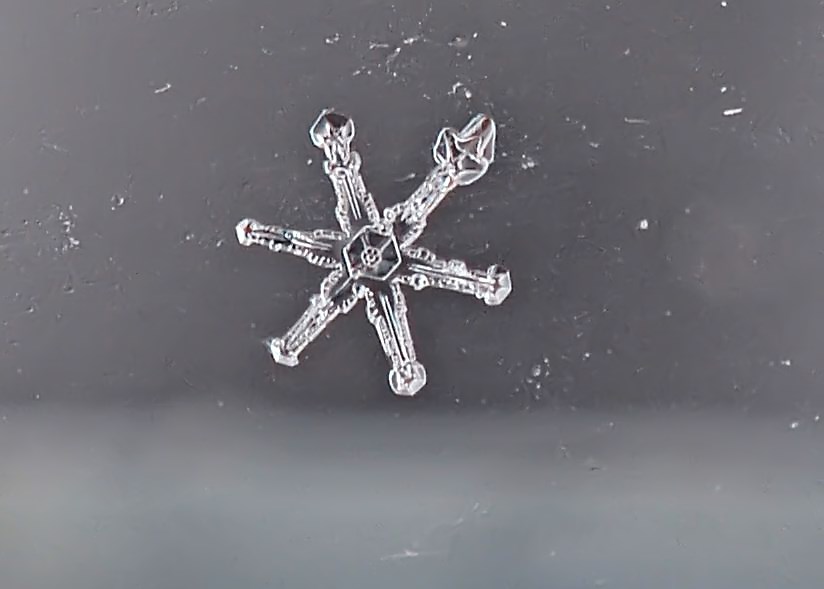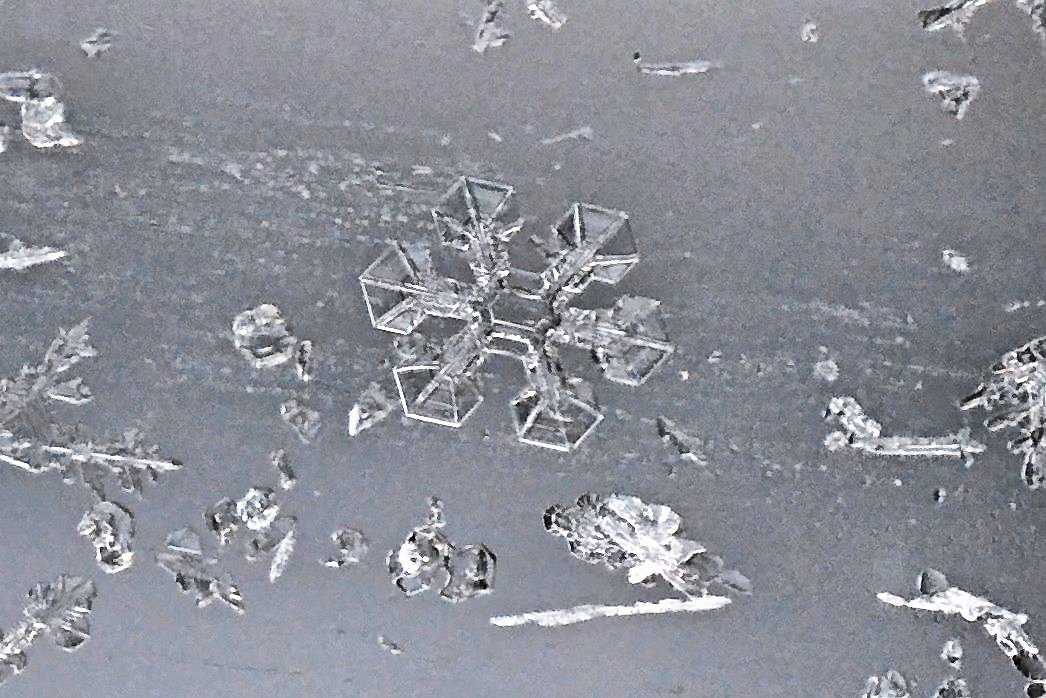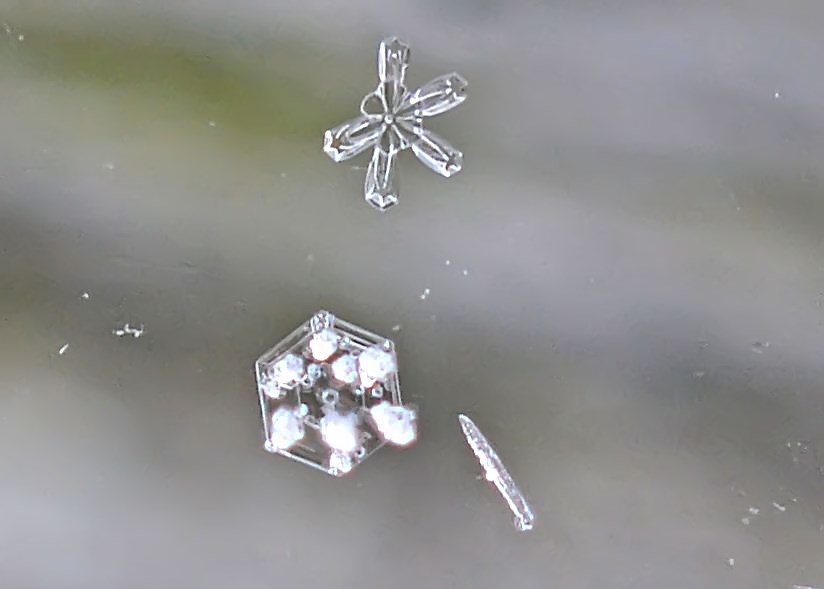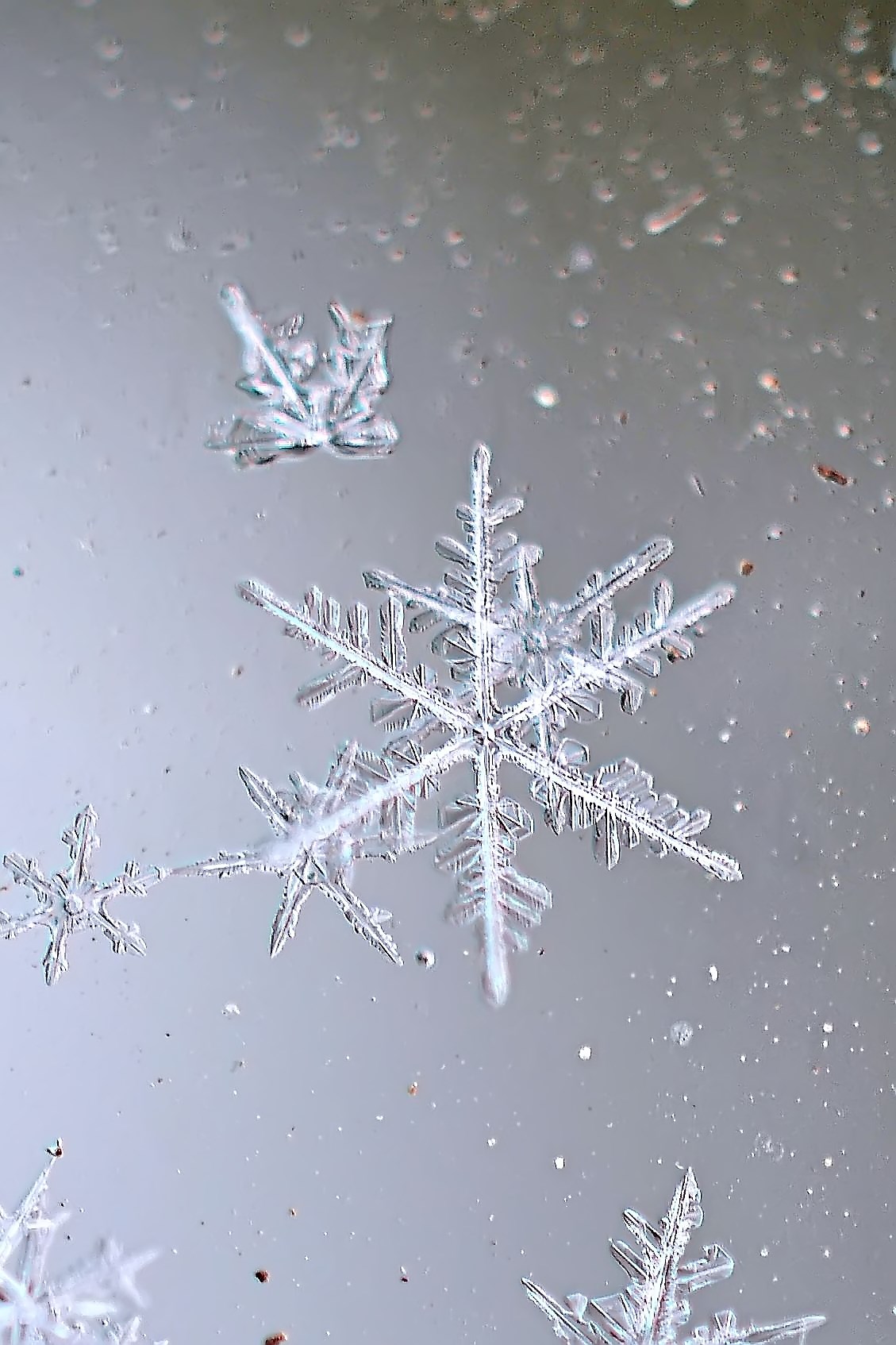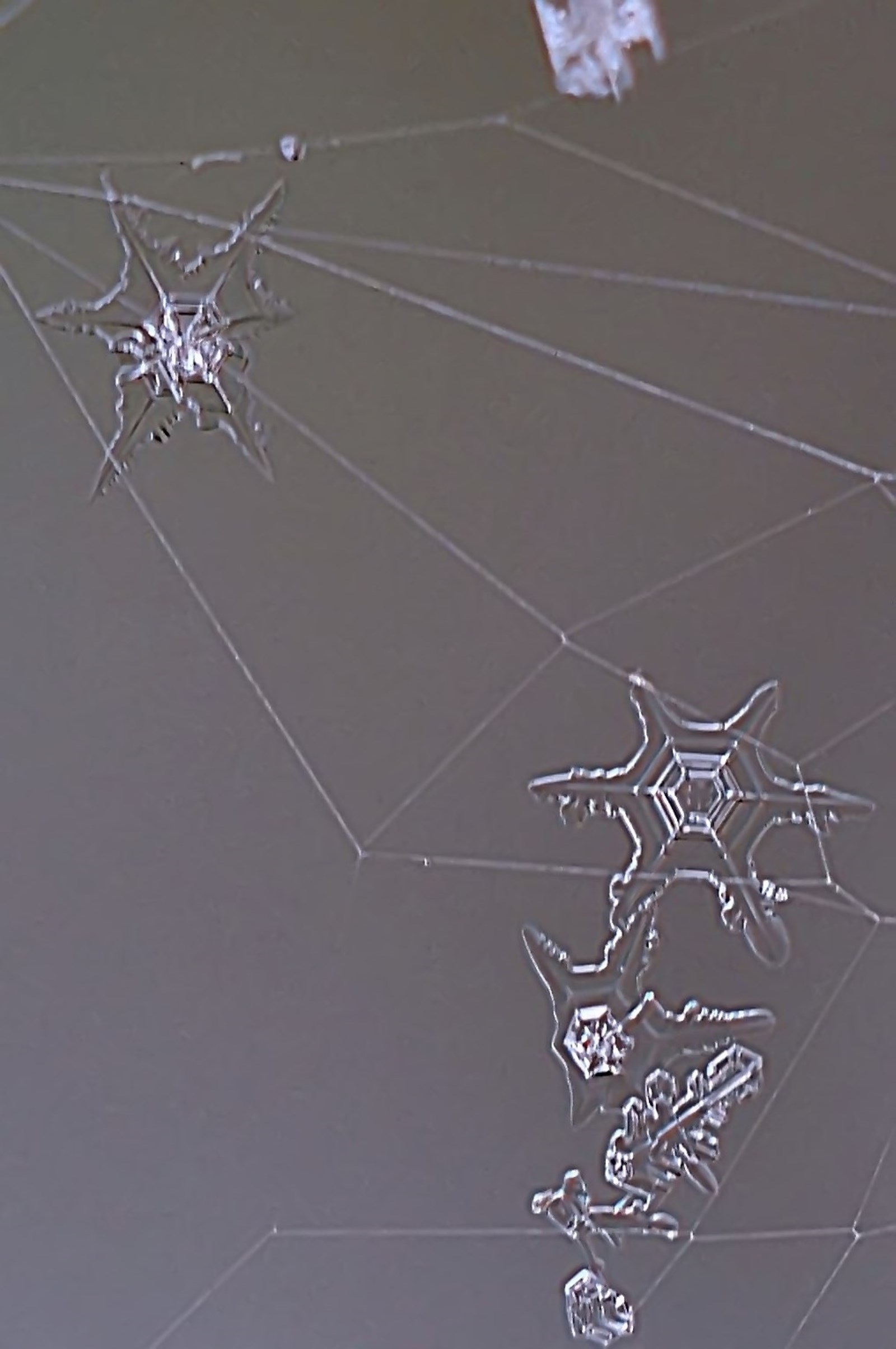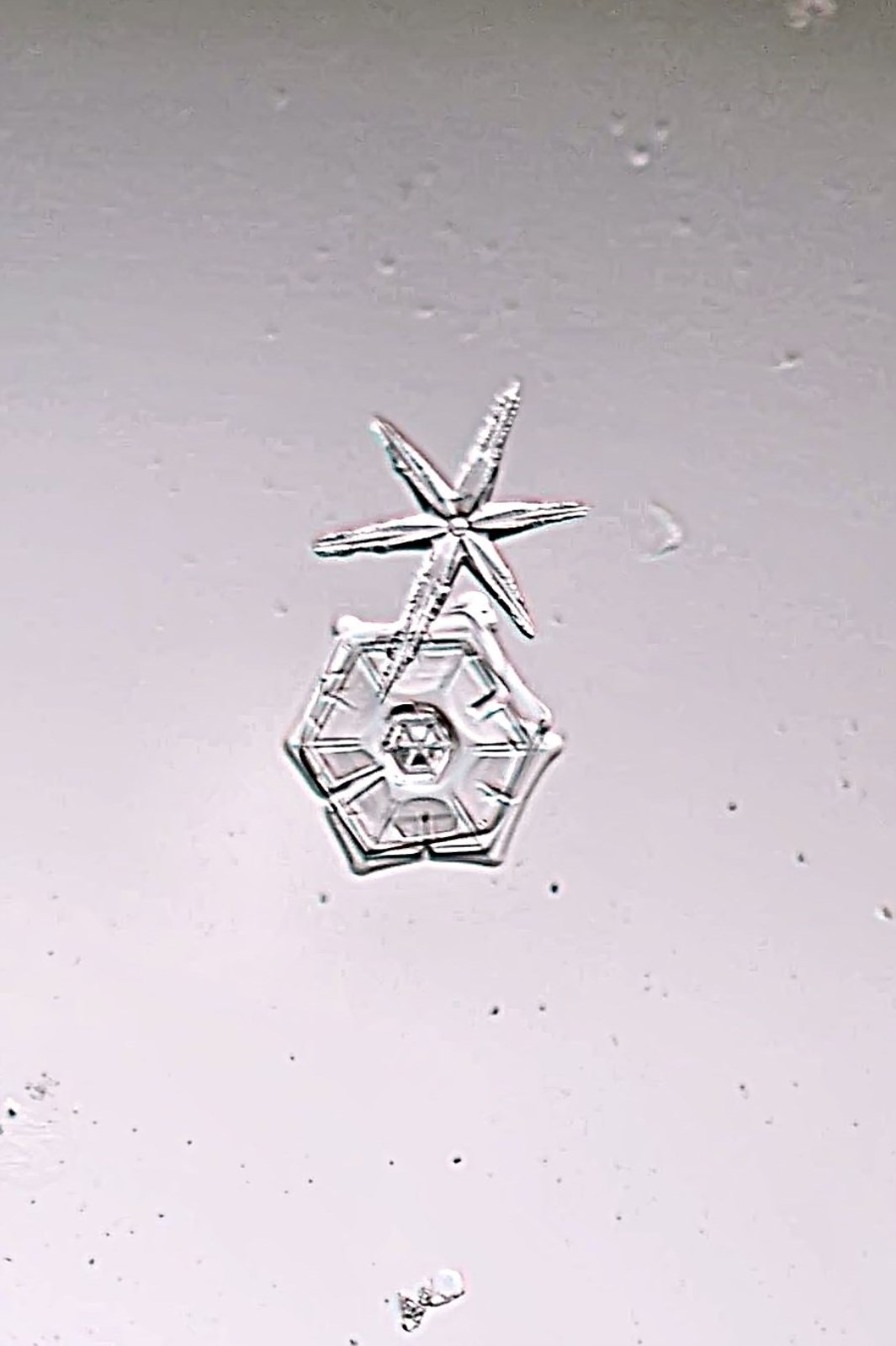How many stars are there in our Universe? How many grains of sand are there on Earth? These are common questions that people ask. But one that is seldom heard is, “How many snowflakes are created each year?” I wouldn’t even attempt to answer that regarding even just a handful of snowflakes!
Macro photography has become a passion of mine. The world of small has become big to me.
One of my favourite winter macro subjects is snowflakes. After all, there aren’t too many subjects in the winter, unlike the other seasons when you have bugs, flowers, etc. Living in Canada gives me ample opportunities to photograph snowflakes!
Snowflakes are made up of ice crystals. The bigger the snowflake, the more ice crystals are present.
The type of snowflake is dependent on the air temperature through which it falls: 0C to -4C creates Hexagonal Plates, -4C to -6C creates Needles, -6C to -10C creates Hollow Columns, -10C to -12C creates Sector Plates (Hexagons with indentations), and -12C to -16C creates Dendrites (the 6-pointed variety of which most of us associate with snowflakes).
I was taught, and have often read and heard, that no two snowflakes are alike. I believe that for I have not seen two that were exactly the same, although they can be similar to the point of looking the same.
Most people think of snowflakes as 6-pointed star-shaped creations. According to www.SnowCrystals.com of CalTech University, there are 35 different types! Most of my photos have been of the stellar varieties and, oh my, do I get excited when I find one of the others! When I do find another type, it’s usually by accident. I’ll photograph a common stellar dendrite snowflake, put it onto my computer monitor, and find one of the other types that I could not see on the camera screen, usually because they are so small and look like little white dots, even to the naked eye.
I use a 40 mm macro lens so that I have to be about 2 ½ to 3 cm from my subject. My depth of field (DOF), as a result, is about 1 mm. That doesn’t leave much room for error. If the snowflake is thicker than 1 mm, then parts of it will be out of focus. Most snowflakes, though, are not thick. I have to be as perpendicular as possible to the subject. Just a few degrees off and part of the snowflake can be out of focus. Occasionally, I will do that purposefully to try to get a different look.
My usual setup is pretty simple. I obtained a free pane of glass that measures about 25 cm by 50 cm from a local window company. I put duck tape around the edges to protect the klutz in me. I place the glass on a railing corner of my deck at least a half hour before I shoot to let the glass get cold enough so that the snowflakes will not melt. The shallow DOF creates a blurred background (bokeh) of the deck below that does not draw attention away from my subject. It just adds a nice background colour
A very few times, snowflakes have clung to a window thus allowing me the comfort of a warm house from which to photograph. Even so, I am not outside for more than 5 to 10 minutes anyway. After that, I start to shiver resulting in camera shake and many spoiled photos and a big batch of disappointments.
I also use the rails of the deck and the black BBQ cover for my background. I do not favour these as much as the glass. As mentioned previously, these backgrounds tend to take away from the snowflake because they are so visible.
Once, there were a number of snowflakes caught in a spider’s web. There was a significant breeze causing the snowflakes to go in and out of focus so quickly that I could not properly focus on any of them. I decided to take my chances and snap off one photo and hope for the best. It was perfect! It turned out to be one of my best photos of snowflakes.
Post processing is an important final step. I usually add about 20% contrast and 20% fill light to try to give a sense of depth to the snowflake and sharpen the image as I deem necessary. I have tried HDR (High Dynamic Range) photos but, to be quite honest, I have not had significantly better results. Snowflakes are almost monochromatic (black and white) and jpg photos are quite sufficient, at least to me they are.
So, if you are a photographer looking for something new, especially in the winter when opportunities do not appear to be plentiful, try snowflake macro photography. It has helped reduce my winter blues and keep my sanity!
And, if you’re not a photographer, get as close as your eyesight will allow you to see snowflakes and marvel in this small little world of God’s artistic creation!
About the Author
Dale Matthies a retired teacher from Goderich, ON who has taken up photography, first as a hobby, now is his passion with published images in the OSPCA and The Toronto Humane Society calendars as well as a variety of websites, magazines and television shows.



